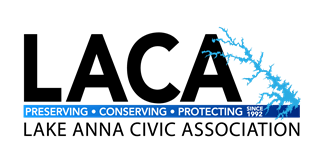- Home
- Instruments
Instruments |
The LACA volunteers obtain data using several methods and instruments. The primary instruments used by the LACA volunteers include the Xylem/YSI ProDSS handheld instrument, the In-Situ AQUA TROLL 500 multiparameter instrument, the Turner Designs CyanoFluor instrument, the LightDeck cyanobacteria toxin instrument, and the Secchi Disk. Each of these instruments and the data they provide are explained below. XYLEM/YSI ProDSS Handheld Unit Water Quality Monitoring System
In-Situ AQUA TROLL 500 Handheld Unit Water Quality Monitoring System
Tuner Designs CyanoFluor(TM) Instrument
The CyanoFluor handheld instrument is used by LACA to detect the presence of chlorophyll (CHL) and phycocyanin (PC) pigments in water samples. The CyanoFluor instrument calculates and reports a PC to CHL ratio that estimates the relative abundance of cyanobacteria, algae that are known to cause Harmful Algal Blooms (HABs). LACA monitors these PC to CHL ratios from May through October. Data from these monitoring events will provide invaluable information to LACA and our water quality partners on changing environmental conditions that could favor cyanobacterial production, potentially leading to cyanobacterial blooms. Our monitoring efforts using the CyanoFluor instrument are used to predict the onset of HABs so we can provide information to our membership and State agencies on the state of algal presence in the lake. The Virginia Department of Environmental Quality (DEQ) and Virginia Department of Health (VDH) monitor the LACA data, along with data collected at regular intervals by DEQ, to ensure proper protocols are implemented to prevent or reduce harmful algal bloom effects. LightDeck MQ Reader Instrument
The LightDeck MQ Reader is an automated, fluorescence-based microarray analysis system intended for the rapid quantitative measurement of analytes within a fluidic sample. The instrument utilizes MBio’s proprietary LightDeck® technology to capture images of the fluorescence generated by the microarray. The MQ Reader works with a single use, disposable, cartridge which contains a printed microarray. A small volume of our collected water sample is introduced into the cartridge and the cartridge is then placed in the reader. The water sample flows into a fluidic channel over the printed microarray and the MQ Reader analyzes the sample and provides a data output. If toxins are present in the sample, the data output provides the measured quantities of toxin. LACA reports all measured levels of toxins to DEQ and VDH as well as several of our academia partners. The MQ Reader is capable of measuring two of the primary toxins found in freshwater, microcystin and cylindrospermopsin. These two toxins can have negative impacts on humans and animals when exposure to high levels occurs. See the LACA Water Quality Data web page for current readings and maps of algal and toxin concentrations. Secchi Disk
The Secchi disk is used to measure how far visible light can pass through the water. This provides an indication of the effect suspended materials in the water have on water clarity. This measurement provides us an indication of the turbidity of the water. A disk with a black and white pattern is lowered into the lake by a measured line until the observer loses sight of it. The disk is then raised until it reappears. The depth at which the disk vanishes and the depth at which it reappears are recorded. The average of these two depths is the Secchi disk reading. The Secchi disk data does not provide a direct indication of algal density in the water. There are many other factors found both inside and outside the lake that affect how deep a person can see into the water – such as suspended sediments, weather and water surface conditions. LACA utilizes the CyanoFluor instrument (see above) to more closely measure the amount of algae in the water. |

 The ProDSS instrument is designed for use in applications such as surface water, groundwater, coastal/estuarine, aquaculture, and wastewater, the rugged and reliable ProDSS allows for the measurement of water quality parameters with digital sensors. The ProDSS water quality meter uses smart sensor technology that allows sensors to be automatically recognized by the handheld while retaining calibration data. We measure air temperature, water temperature, pH, dissolved oxygen (DO), and specific conductance. We take readings of these parameters at four depths (0.3, 1, 2, and 3 meters). Air and water temperatures are measured and recorded to have a record of the conditions under which the other data are obtained.
The ProDSS instrument is designed for use in applications such as surface water, groundwater, coastal/estuarine, aquaculture, and wastewater, the rugged and reliable ProDSS allows for the measurement of water quality parameters with digital sensors. The ProDSS water quality meter uses smart sensor technology that allows sensors to be automatically recognized by the handheld while retaining calibration data. We measure air temperature, water temperature, pH, dissolved oxygen (DO), and specific conductance. We take readings of these parameters at four depths (0.3, 1, 2, and 3 meters). Air and water temperatures are measured and recorded to have a record of the conditions under which the other data are obtained.  The Aqua TROLL 500 handheld instrument is comprised of a mobile display, power pack, cable, and multiparameter water quality probe. The instrument used in the LACA Water Quality Monitoring Program (WQMP) includes sensors for temperature, pH, dissolved oxygen (DO), conductivity, turbidity, and depth. The display uses an Android tablet or phone with an internal battery and a liquid-crystal screen (LCD) and is used for viewing the value of the measured parameters and for configuring and calibrating the sensors.
The Aqua TROLL 500 handheld instrument is comprised of a mobile display, power pack, cable, and multiparameter water quality probe. The instrument used in the LACA Water Quality Monitoring Program (WQMP) includes sensors for temperature, pH, dissolved oxygen (DO), conductivity, turbidity, and depth. The display uses an Android tablet or phone with an internal battery and a liquid-crystal screen (LCD) and is used for viewing the value of the measured parameters and for configuring and calibrating the sensors.

